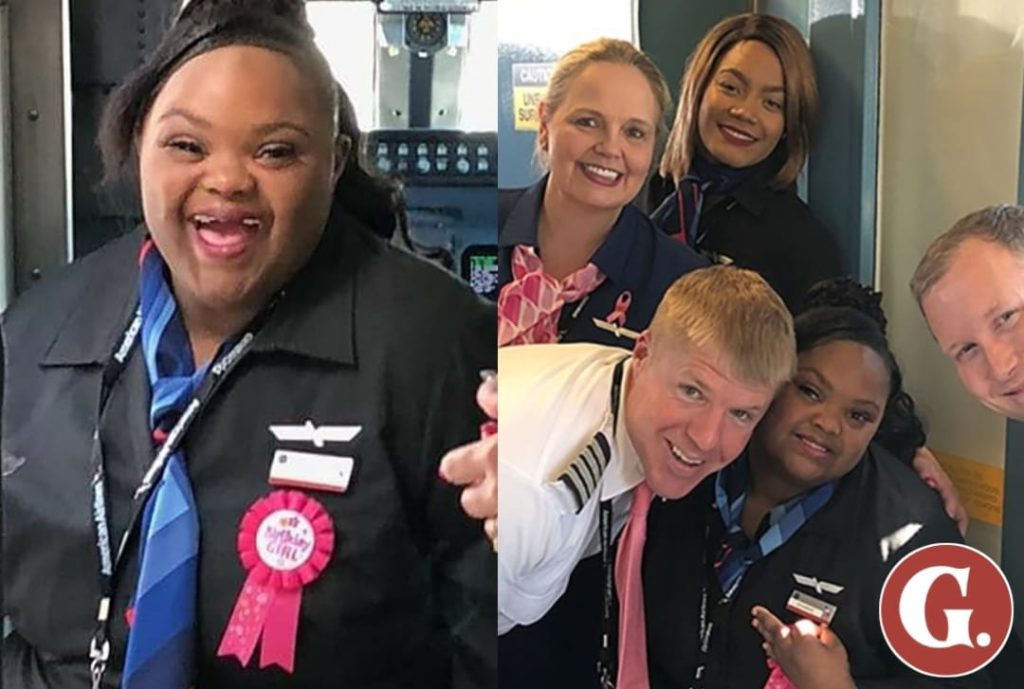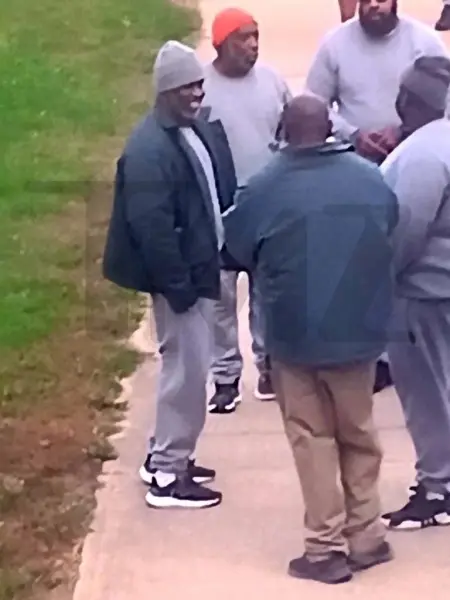Terminally Ill 17-Year-Old Girl With Down Syndrome Fulfills Her Lifelong Dream of Becoming a Flight Attendant
There are stories that break your heart, and then there are stories that gently stitch the pieces back together. This is one of those stories. It’s about a teenager who refused to let her diagnosis define her limits. A girl whose joy could light up a room, whose smile could melt the hardest of hearts, and whose dream—to become a flight attendant—took her somewhere far beyond what anyone expected.
Her name is Shantell Pooser. Most people call her “Shannie.” At just 17 years old, she was already facing more challenges than most adults see in a lifetime. Born with Down syndrome, she was also diagnosed with a terminal airway defect that required multiple surgeries. Her mom, Deanna Miller-Berry, says doctors didn’t expect her to live past 13. But Shannie, as it turns out, had other plans.

Flying had always been her happy place. Because of her condition, Shannie had to fly frequently for medical treatments. While most people dread airport lines and cramped cabins, Shannie saw them as magical portals. She loved the feeling of soaring through the clouds, of being part of the in-flight experience. Somewhere along the way, she fell in love with the idea of becoming a flight attendant. Not because it was easy. Not because someone told her she could. But because it made her feel alive.
Her mom recalled how Shannie would study the attendants as they walked the aisles, mimicking their safety instructions and practicing her “welcome aboard” speech at home. It wasn’t a fleeting childhood fantasy. It was a dream rooted in admiration, repetition, and unshakable excitement. Despite her terminal diagnosis, Shannie held onto this dream like her life depended on it. And in a way, it did.

One day, during a routine flight with American Airlines, something incredible happened. A flight attendant noticed Shannie’s enthusiasm and struck up a conversation. That simple exchange became the start of something extraordinary. Word reached the airline’s leadership, and within weeks, American Airlines was planning something special—not just for Shannie, but with her.
The airline didn’t offer her a symbolic title or a brief photo-op. They went all in. Shannie received a real uniform, complete with wings, a name badge, and even a crew ID. On the day of her honorary service, she was escorted onto the plane like a true professional. She walked the jet bridge in full uniform, passengers cheering, many with tears in their eyes. You couldn’t look at her without smiling.

Once onboard, she helped greet passengers, assisted with the safety demonstration, and even made announcements over the intercom. Every second was soaked in joy—not just for her, but for everyone witnessing it. Crew members said her presence transformed the flight. It wasn’t just about granting a wish; it was about celebrating a life lived with passion and courage.
Her mom described the moment as bittersweet. “Doctors gave her a short window to live, and here she was, fulfilling a dream that many thought was impossible.” For Shannie, it wasn’t about being terminal. It was about being seen. Being valued. Being a part of something bigger than herself. That day, she wasn’t a patient. She was a flight attendant.
The story caught fire online, and rightfully so. Social media lit up with praise, love, and emotional responses from strangers all over the world. Thousands of people shared the video of her walking down the aisle with her flight crew. The ribbon on her chest read: “Birthday Girl.” But that day, it could’ve just as easily said: “Dream Achiever.”
The beauty of this story is not just in the dream itself, but in how it came true. It’s a reminder that kindness still exists in institutions we often take for granted. That airlines, often criticized for delays and lost luggage, are filled with people who care. American Airlines didn’t just give Shannie a moment—they gave her a memory that lives far beyond her diagnosis.
Her mom has since turned her energy into advocacy. She’s now a disability rights activist, working to create more inclusive experiences for kids like Shannie. Their story isn’t just heartwarming—it’s transformational. It shows what happens when communities, corporations, and individuals come together to uplift a single soul. And in doing so, they lift us all.
Shannie’s journey reminds us that dreams don’t have expiration dates. That the human spirit, even when fragile, can rise higher than any plane. She could’ve chosen to let her illness define her, to live in the shadow of what she couldn’t do. But she didn’t. She wore her wings with pride and gave us a glimpse into what real courage looks like.
As her story continues to circulate, it challenges us to ask ourselves: What are we doing with the time we have? Are we lifting others? Are we listening to the dreams of those who rarely get a voice? Shannie’s flight may have landed, but her impact is still in the air, circling around hearts and inspiring us to live with more joy, more purpose, and more love.
There are a lot of stories in the world. Stories of pain, stories of struggle, stories of loss. But every now and then, there comes a story that reminds us why we believe in goodness. Why we hold onto hope. Shannie’s story is that reminder. Her wings weren’t just stitched to her uniform. They were etched into our memory. And no matter what comes next, she flew higher than anyone ever expected.


